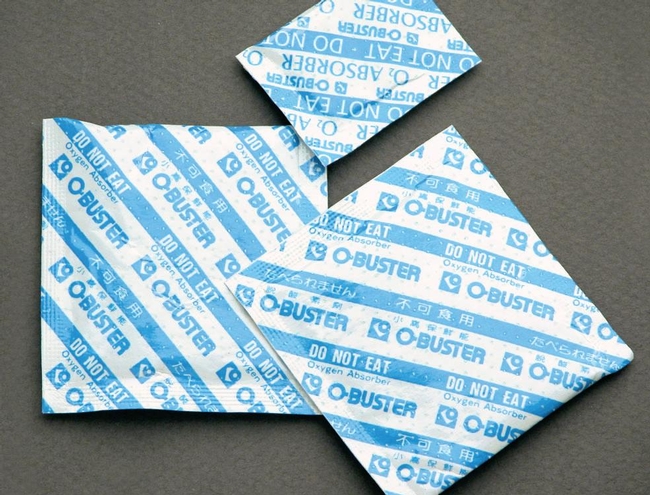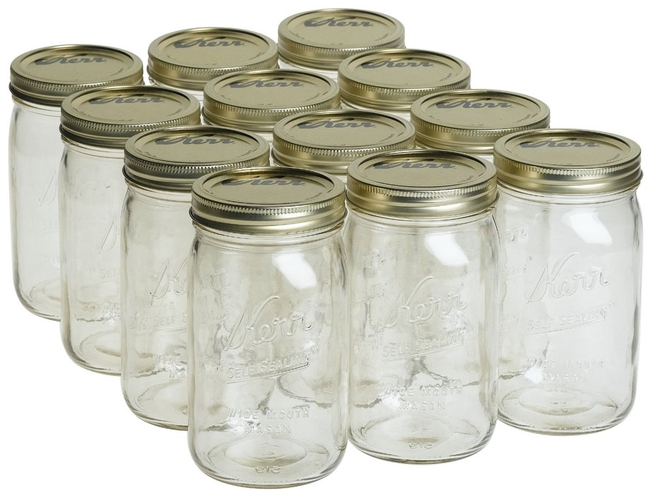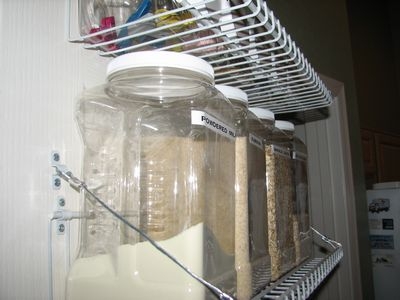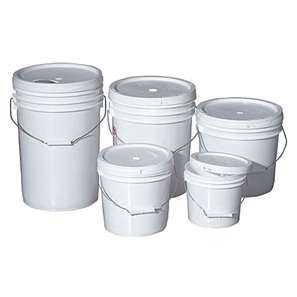Containers
Moisture and oxygen are the two most important factors in spoilage or decay of stored foods.
Moisture in dried foods can lead to microbial growth and moisture around metal canned foods can lead to rust and eventually compromise the can.
Oxygen is an important factor in quality deterioration of many foods.
Oxygen Absorbers
Oxygen absorbers protect dry foods from insect damage and help preserve product quality.
Foil Pouches
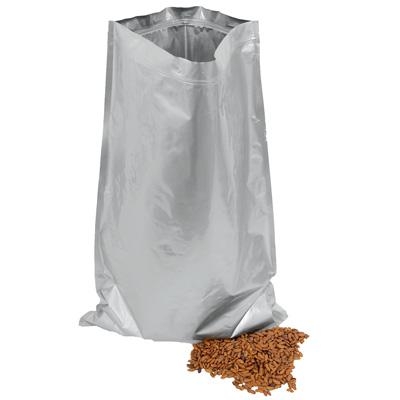
Glass Jars
Any glass jar with a screw-on lid will work for storing dried foods. Two-piece lid, Mason style jars are the safest for home canning foods.
Metal Cans
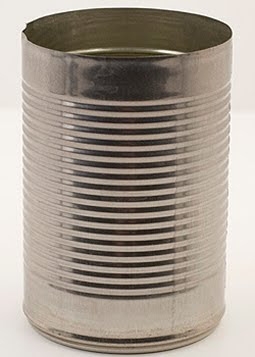
These are molded, rigged bottles made from the same material as the foil pouches. These containers have short-term oxygen barrier qualities. They can be used with an oxygen absorber for an extended life. Not dishwasher safe.
Plastic Buckets
Only use buckets made of food-grade plastic with gaskets in the lid seals.
Note: Foil pouches, PETE containers, and plastic buckets are not rodent proof. If rodents or other pests are a significant potential problem in the storage area, foil pouches, PETE containers, and plastic buckets holding food should be placed into containers that are rodent or pest proof. Do not store food in containers that have been used to store non-food items.
What Not To Store For Long Term
Oily Grains
(Nuts, brown rice, pearled barley, quinoa, sesame seeds and flax seeds)
Storing food can cause quality deterioration. Oily grains or seeds have high levels of oils, which are subject to rapid rancidity. The more unsaturated the oil, the more quickly it will become rancid. In other words, the healthier the oil, the faster it will deteriorate.
Milled Grains
(Whole wheat flour, cornmeal, cereal, granola)
Milling or grinding makes the interior surfaces of grains accessible to oxygen. The oxygen then can catalyze an oxidation reaction leading to rancidity of the grain oils and causing changes to other chemicals in the flour.
Here are some DANGEROUS home preservation methods that are being circulated. Don't do them!
Home Canned Quick Breads
This is dangerous. A recipe for baking zucchini bread in a canning jar has been widely distributed with a 45-minute baking time at 325 degrees F. According to several studies, canned bread meets all the criteria to allow growth of Clostridium botulinum, which can cause the fatal food-borne illness botulism.
Petroleum Jelly or Mineral Covered Raw Eggs
This is a food shelf life extension (quality extension) method, NOT a food preservation method. According to some studies, there is a major food-borne illness risk if eggs are stored above refrigeration temperature (34-38 degrees F). To extend the shelf-life of eggs, mineral oil (often called egg oil) may be rubbed onto egg shells to fill their pores. This minimizes air and bacteria entry, prolonging their (refrigerated) shelf life. The key is that the eggs always be refrigerated.
Home Canned Butter
The methods circulating for canning butter have not been scientifically tested for consumption safety. .
Vacuum Sealed “Wet Foods”
Vacuum sealed dry foods are safe because of the absence of moisture. But don't vacuum seal wet foods because they provide optimal environment for the growth of botulism-causing bacteria. Many people see foods like tuna in a mylar bag and assume it is only vacuum sealed. It's not! Actually, it has been heat processed, just as if it were in a Mason jar, for low acid canning.
Note: To avoid potentially exposing your family to food borne illnesses, purchase commercially processed butter and eggs. Pressure can meat in a Mason jar or purchase them commercially processed. Make your own, dry quick bread packages and add liquids the day you intend to cook it; this will taste much better and be safer than the home canned quick breads we've mentioned.
Freezer Tips - When the Freezer Goes Out
In case of a power failure, check with the utility company to see how long it will be before power is restored. If your power is not likely to be on again within a day, you can do the following:
-
Check into moving your frozen food to a freezer that is working; you might have a friend or neighbor with space in their freezer for your food.
-
If there is no space available in another freezer, use dry ice in your freezer to keep your food frozen. Dry ice is very cold. Handle it quickly and always wear heavy gloves to prevent the ice from burning your hands. A 50 lb. bag of dry ice is enough to protect solidly frozen food in a 20-cubic foot freezer for three to four days. Put heavy cardboard on top of packages of frozen food in each compartment of your freezer and put the dry ice on top of the cardboard. Close the freezer and DON'T open it again until you need to replace the dry ice or the freezer is working again. Cook smaller packages that are beginning to defrost and leave larger foods like turkeys and roasts in the freezer, as these can serve as blocks of ice.
You can provide extra insulation for your freezer by covering it with blankets or quilts. Putting packaging material or crumpled newspapers between the cabinet and the blankets will also help. Be sure to fasten coverings away from the air vents on the outside of the freezer. The power may come on unexpectedly and ventilation will be needed.
If there is ample advanced notice of an emergency, fill food-grade water jugs with water and freeze them; you can use them to keep the food frozen longer. When the ice melts, you can drink the water.
References:
“A Guide to Food Storage For Emergencies”, Utah State University: extension.USD.EDU
“What to do if the Freezer Stops” National Center for Home Preservation: nchfp.uga.edu
“Build A Kit” Food Ready: ready.gov
